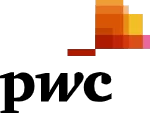© 2021 All rights reserved
Datavagyanik- Your Research Partner

The ventilator market in the Middle East is expected to grow due to the increasing incidence of respiratory diseases and the growing demand for advanced medical equipment. The region has a large population with a high prevalence of respiratory diseases, such as chronic obstructive pulmonary disease (COPD) and pneumonia, which is driving the demand for ventilators.

In the Middle East, there has been a significant increase in investment in the healthcare sector, which has led to the growth of the medical equipment market, including the ventilator market. Additionally, the implementation of government initiatives and programs aimed at improving healthcare facilities and services has also contributed to the growth of the ventilator market in the region.
In addition, the Gross Domestic Product (GDP) of the healthcare share is expected to rise 19.7 per cent by 2027.
In recent years, the COVID-19 pandemic has had a significant impact on the ventilator market in the Middle East. The pandemic has led to a significant increase in the demand for ventilators, particularly critical care ventilators, as a result of the high number of COVID-19 patients requiring respiratory support. Additionally, the pandemic has accelerated the adoption of remote patient monitoring systems and telemedicine, which has created opportunities for the growth of the ventilator market in the region.
Overall, the ventilator market in the Middle East is expected to grow in the coming years due to the increasing incidence of respiratory diseases, growing demand for advanced medical equipment, and the implementation of government initiatives and programs aimed at improving healthcare facilities and services.
A ventilator is a medical device used to assist or control breathing. It helps to deliver air or a mixture of air and oxygen to the lungs of individuals who are unable to breathe effectively on their own. Ventilators are classified into different types based on their intended use, including critical care, neonatal, transport, and portable ventilators.
Critical care ventilators are used in intensive care units and are designed for patients who are critically ill and require mechanical ventilation. They provide precise control of breathing and offer a wide range of modes, including volume control and pressure control.
There are two main modes of ventilators: invasive and non-invasive.
Invasive ventilators, also known as mechanical ventilators, require the insertion of a breathing tube through the patient’s mouth or nose into the windpipe. Invasive ventilators are used in the most critical situations, where the patient’s breathing is severely compromised, and they cannot maintain their airway.
Non-invasive ventilators, on the other hand, do not require the insertion of a breathing tube into the patient’s airway. They deliver air or oxygen to the patient through a mask that covers the nose and mouth. Non-invasive ventilators are used in less severe cases, where the patient still has some ability to breathe on their own. `
Saudi Arabia’s ventilator market is relatively smaller but is also growing at a steady pace. The country’s healthcare sector is undergoing rapid expansion due to increased government spending on healthcare infrastructure and services. Additionally, Saudi Arabia’s strategic location and strong economic ties with other countries in the region have enabled it to become a major hub for medical equipment imports. Furthermore, Saudi Arabia’s population is expected to grow significantly over the next few years, which will further drive up demand for ventilators in the country.
The UAE ventilator market is growing rapidly due to the increasing demand for medical equipment in the region. The UAE has a large population and a high rate of healthcare expenditure, which has led to an increased demand for medical equipment such as ventilators. Additionally, the UAE government has been investing heavily in healthcare infrastructure, which has further boosted the demand for ventilators. Furthermore, the country’s strategic location and strong economic ties with other countries in the region have enabled it to become a major hub for medical equipment exports.
The middle east ventilator market has been segmented into products, Ventilation Modes and End-use.
Based on the product type, the middle east ventilator market is Critical Care, Neonatal, Transport & Portable. In 2021, Critical Care held a significant share. This was mainly due to the increased demand for personal protective equipment, ventilators and other medical supplies as a result of the COVID-19 pandemic. This surge in demand was a direct result of the pandemic and created a unique challenge for manufacturers to meet these demands quickly and efficiently. Due to their effectiveness in a range of applications in various care delivery settings, transport and portable mechanical ventilators are anticipated to experience the quickest growth throughout the projection period.
The development of portable, affordable, and patient-friendly technology promotes their use even more. They can provide respiratory support to those in need in a variety of settings, such as the home, ambulatory care centres, and long-term care facilities. This versatility, combined with their convenience and cost-effectiveness, makes them an attractive option for healthcare providers. Hospitals are advocating the use of portable ventilators to provide patients with convenient and expedient care from an ambulance to the hospital bed. Patients are encouraged to choose home care when using portable ventilators, which raises awareness of the practice.
Based on Ventilation Mode, the market is classified as Invasive and non-invasive. In 2021, the segment is expected to account for a significant share of non-invasive procedures. This is because of the increasing awareness of the safety and efficacy of these procedures and their cost-effectiveness. Also, technological advancements in the field of non-invasive procedures have made them more accessible to the public. Furthermore, such procedures have become increasingly popular due to their minimal recovery time, painless nature, and fewer risks of complications compared to traditional invasive surgeries.
Based on End-use, the market is classified as Hospitals, Home Healthcare, and Others. In 2021, the hospitals’ segment is expected to account for a considerable share. This is due to the increased demand for healthcare services, which has been driven by the COVID-19 pandemic. The need for better infrastructure and equipment to handle the high number of patients has also led to an increase in the hospital segment’s share. Furthermore, the rise in telehealth services and their adoption by both hospitals and patients has been a major contributor to the growth of the hospital segment.
One of the most notable acquisitions was the acquisition of the UAE-based medical device manufacturer, Smart Medical Solutions, by the Saudi Arabian-based venture capital and private equity firm, Waseela Holding. This acquisition was seen as a move to strengthen Waseela Holding’s position in the ventilator market.
In addition, there were several other acquisitions in the Middle East ventilator company space, such as the acquisition of the Turkey-based medical device manufacturer, Medikal Teknoloji Sanayi, by the UAE-based healthcare technology company, InHealth Technologies. This acquisition was seen as a move to expand InHealth Technologies’ portfolio and presence in the Middle East.
By Product Type
By Ventilation Mode
By End-use
By Region
“Every Organization is different and so are their requirements”- Datavagyanik







© 2021 All rights reserved
Datavagyanik- Your Research Partner
Add the power of Impeccable research, become a DV client